Brazilian name: maçarico-branco
Chilean name: playero blanco
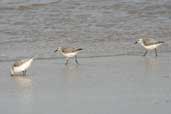
In its wintering grounds it feeds along the wave-break zone of tidal, sandy beaches where it probes for small invertebrates. It dashes along the beach with its head forward, tail up and legs a blur until it finds something to eat and then off it goes again.
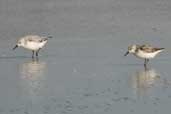
The first 2 photos were taken on 1st September at Lagoa do Peixe, Rio Grande do Sul, Brazil and Belton says that the small quantity of individuals seen at the end of August and in September and October are, presumably, migrants from North America.
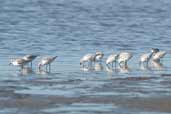
You might be interested to see my photos of Sanderling taken in the northern hemisphere which you will find here.
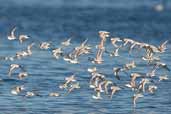
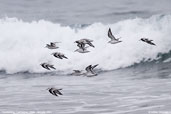
| Previous Page | Back to Index | Next Page |